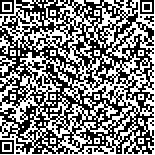| Click: 793 Download: 342 |

|
| Embedded Scenario Clustering for Wind and Photovoltaic Power, and Load Based on Multi-Head Self-Attention |
| Lijun Liu,Member, IEEE,Xin Hu,Junsheng Chen,Ruixing Wu,Feixiong Chen |
|
|
|
| Abstract: |
| The source and load uncertainties arising from increased applications of renewable energy sources such as wind and photovoltaic energy in the power system have had adverse effects on optimal planning and dispatching. Models for generating typical renewable energy and load scenarios are constructed to reduce such effects and improve the applicability of a planning and optimal dispatching model of power systems with a high proportion of renewable energy. The traditional clustering-based model for representing such scenarios cannot handle high-dimensional time-series data and consequently the feature-related information obtained cannot fully reflect the characteristics of the data. Thus, a deep convolutional embedded clustering model based on multi-head self-attention is proposed. First, a variational mode decomposition model is optimized to reduce the influence of noise-related signals on the feature extraction. The deep features are then extracted from the data using an improved convolutional autoencoder, and the appropriate number of clusters is determined using the elbow method. Following this, the network parameters are optimized based on the sum of losses during reconstruction and clustering. Subsequently, typical scenarios are then generated based on the optimized network model. Finally, the proposed method is evaluated based on data visualization and evaluation metrics. It is shown that the quality of features and the accuracy of clustering can be effectively improved by the proposed scenario generation method. |
| Key words: Deep embedding for clustering, extracting
features of time-series data, multi-head self-attention
mechanism, scenario generation, uncertainty. |
| DOI:10.23919/PCMP.2023.000296 |
|
| Fund:This work is supported by the Special Grant from the
Department of Finance, Fujian Province (No. 83022005)
and the National Natural Science Foundation of China
(No. 52107080). |
|